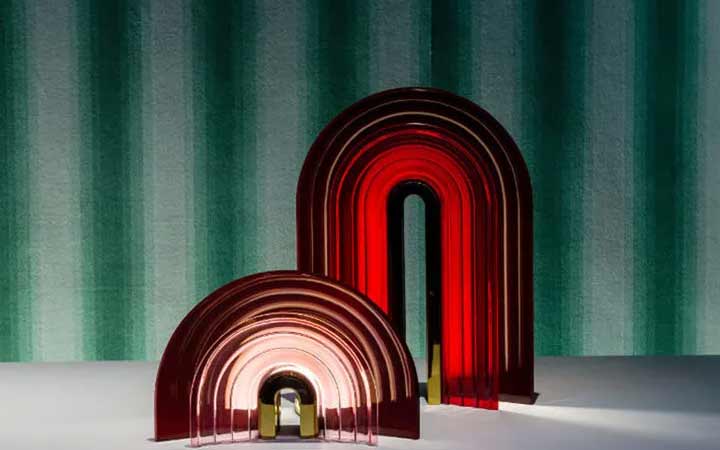Are you a lover of vintage aesthetics and elegance? Do you appreciate the beauty of unique lamp designs that stand out from traditional lighting fixtures?
Then, you’re in the right place. Today, I’m excited to dive into the world of Art Deco lamps, exploring their beauty and fascinating history.
Art Deco lamps were a significant component of the Art Deco style, which was popular in the 1920s and 1930s.
What sets Art Deco lamps apart from other lamp designs is their striking combination of dynamic geometric shapes, intricate patterns, and innovative materials.
Art Deco designers experimented with new materials such as chrome, Bakelite, and glass, creating lighting fixtures that were both visually stunning and functional.
Beyond their unique design elements, Art Deco lamps also have a rich history worth exploring. This era of design and innovation is a testament to the creativity and boldness of designers who dared to push beyond the limits of tradition.
In this post, we’ll take a closer look at the unique features of Art Deco lamps, including their designs, materials, and practicality. Join me on this journey of exploration into the beauty and history of Art Deco lamps.
Geometric Designs and Intricate Patterns
Art Deco lamps feature intricate patterns and geometric designs, making them unique and visually stunning.
The Art Deco style used geometric shapes and patterns, including stepped forms, chevron stripes, and starburst motifs.
These geometric shapes and patterns are an attribute of Art Deco lamps that makes them unique from other traditional lamp designs.
The distinctive patterns and shapes of Art Deco lamps are visually striking and illustrate the creativity and daringness of Art Deco designers.
Tiffany Studios was a prominent design company producing iconic Art Deco lamps featuring geometric designs and patterns.
One of the most famous Tiffany Studios lamps is the Dragonfly lamp, which features multicolored dragonflies set against a backdrop of colored glass.
The lamp’s base and body feature curvilinear lines that create an organic movement against the rigid, geometric lines of the shade.
Using geometric shapes and intricate patterns in Art Deco lamps creates a striking contrast, setting the Art Deco style apart from other traditional lamp designs.
Vintage Materials: A Mark of Daring and Innovation
The Art Deco style embraced unconventional materials, including chrome, glass, and bronze.
During this era, designers experimented with new materials such as Bakelite, plastic, and celluloid. The Art Deco style’s use of innovative materials was a considerable attribute.
Designers pushed the boundaries of current technology and design, creating lighting fixtures that were both visually stunning and functional.
The use of various materials created an opportunity for Art Deco designers to incorporate new patterns and textures into their designs.
Using Chrome, for example, allowed designers to create sleek and simple designs. Bronze featured intricate carvings and patterns, adding an element of luxury to the design.
The use of Bakelite, a type of early plastic, allowed for subdued colors and functional designs, while the use of glass resulted in diverse finishes that could be opaque or translucent.
A Sturdy Frame: Functionality and Versatility
Art Deco lamps were designed with functionality and versatility in mind. The practicality of these lamps made them highly sought after among consumers.
Art Deco lamps were available in various styles and sizes, including floor lamps, table lamps, and chandeliers. These lamps featured adjustable arms, providing the perfect light for different settings.
One of the unique features of Art Deco lamps is their versatility. These lamps can be used in various settings, from providing task lighting in a design studio to enhancing the ambiance of a formal dining room.
The Art Deco style incorporates various design elements, offering different lamp styles that cater to diverse lighting needs.
Incorporating Art Deco Lamps in Your Home Decor
Incorporating Art Deco lamps into your home decor is an excellent way to add a touch of vintage elegance to your living spaces. The use of Art Deco lamps creates a unique ambiance that is warm and inviting.
When decorating your home with Art Deco lamps, consider complementing them with metallic finishes or bold colors.
For example, chrome lamp bases pair well with muted shades, while a bronze lamp would look great in a room with bold, bright colors.
Additionally, placing an Art Deco lamp near your reading chair or in your entryway can provide functional lighting while adding a touch of sophistication to your living spaces.
Maintaining Art Deco Lamps: A Nod To History
The maintenance and upkeep of Art Deco lamps are essential for preserving their beauty and value as antiques.
To maintain the beauty of your Art Deco lamp, it is necessary to clean the shade and wiring carefully.
Avoid using harsh cleaners or abrasives when cleaning the lamp, as this can damage the surface of the shade or base.
Proper restoration of the lamp finish is crucial for protecting the value of the lamp. Taking care of the original lamp finish can help preserve its value and history.
Avoid using abrasive polishing products or harsh chemicals that can damage or strip the lamp’s surface when cleaning the finish.
Conclusion
Art Deco lamps uniquely blend beauty, functionality, and materials. One of the most significant features of Art Deco lamps is their striking geometric designs and intricate patterns.
Art Deco designers used unconventional materials such as chrome, glass, and Bakelite, resulting in diverse finishes and textures.



